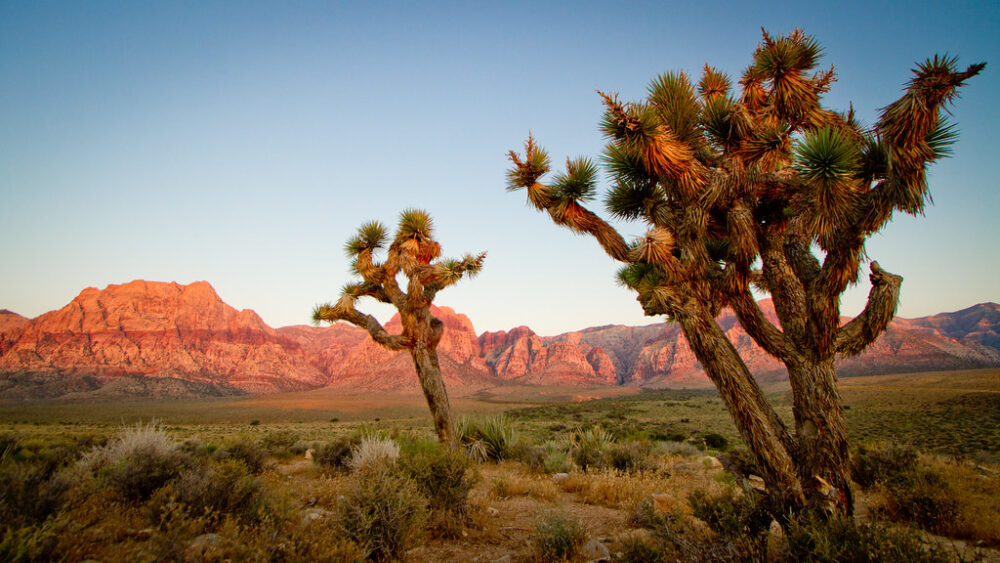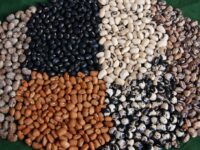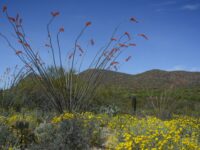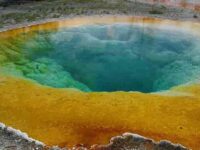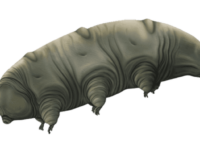Considered a disgusting sight among the first surveyors of the Mojave Desert, the Joshua tree is a true symbol of resilience and strength. Its appearance is an aggressive silhouette, providing texture to the smooth Mojave Desert dunes. In fact, despite their look, they are not trees, but rather succulents.
These succulents have stood the test of time, originally becoming a species over 2 million years ago. Through time, these plants have proven to be extremely useful for a variety of applications. Native Americans would eat the seeds and use the leaves as materials for baskets and sandals. They were also used as foundations for new settlers’ homes and fuel for miners. Giant sloths also ate the plants, which contributed to seed distribution for the continued survival of the species. Additionally, the succulent serves as a shelter for many different critters, ranging from birds to lizards.
These plants can recover quickly and effectively after a disastrous event: They can sprout and grow from roots and branches left behind by the original tree.
The special thing about these “trees” is their resilience. These plants can recover quickly and effectively after a disastrous event: They can sprout and grow from roots and branches left behind by the original tree. This ability to easily proliferate after a fire or flood makes this tree much more tolerable towards disaster; however, they are fragile when put under immense pressure. As climate change progresses and temperatures in the Mojave Desert increase, organisms such as the Joshua tree could be in grave danger. An increased temperature causes these plants to develop thinner stand density, which reduces their numbers within the environment. These plants also require water, and the potential risk of the Mojave Desert drying up due to increased droughts caused by climate change would force these symbols of resilience to finally break down and die out.
The Joshua Tree Genome Project wants to prevent this. This organization is partnered with a plethora of botanical societies and associations — most importantly the Joshua Tree National Park Association. They plan on utilizing the ability to access and alter the Joshua tree genome sequence, which can provide scientists with the ability to control how the Joshua tree reacts to climate change. The ability to insert new genes into the Joshua tree can make it more drought resistant, more attractive to its pollinators, like the Yucca moth, and can improve its overall interaction with its ecosystem. Being able to do this can help increase the odds of survival for this special succulent.
The ability to insert new genes into the Joshua tree can make it more drought resistant, more attractive to its pollinators, like the Yucca moth, and can improve its overall interaction with its ecosystem.
The Joshua Tree Genome Project plans on collecting sequences of DNA using Illumina sequencing and the PacBio method. Illumina sequencing collects large amounts of sequence data from the tree but in smaller segments, while the PacBio method is capable of reading longer strands of DNA but cannot store as much DNA data. The organization also plans on adding a new method from BioNano called “optical mapping.” This will help piece together sequences of DNA into a full genome sequence.
The project has not yet completed its goal, as the entire Joshua tree sequence has about 3 billion DNA bases in length. However, once the genome is completely assembled, the project plans on selecting the genes that are the most important towards resilience, resistance, and functionality. They then plan on creating an “atlas” that maps out what each gene is responsible for, particularly focusing on the ones that control the tree’s ability to respond to its environment.
If the scientists working on the Joshua Tree Genome Project manage to complete the sequencing of the Joshua tree genome, this could be a promising advancement for the future of the succulent. The success of this project can lead to the genetic modification of many other prominent and sentimental organisms at many state and national parks. With time and further scientific advancement, hopefully, the Joshua tree will endure this warming climate.
PLOS ONE (2018). DOI: 10.1371/journal.pone.0193248
